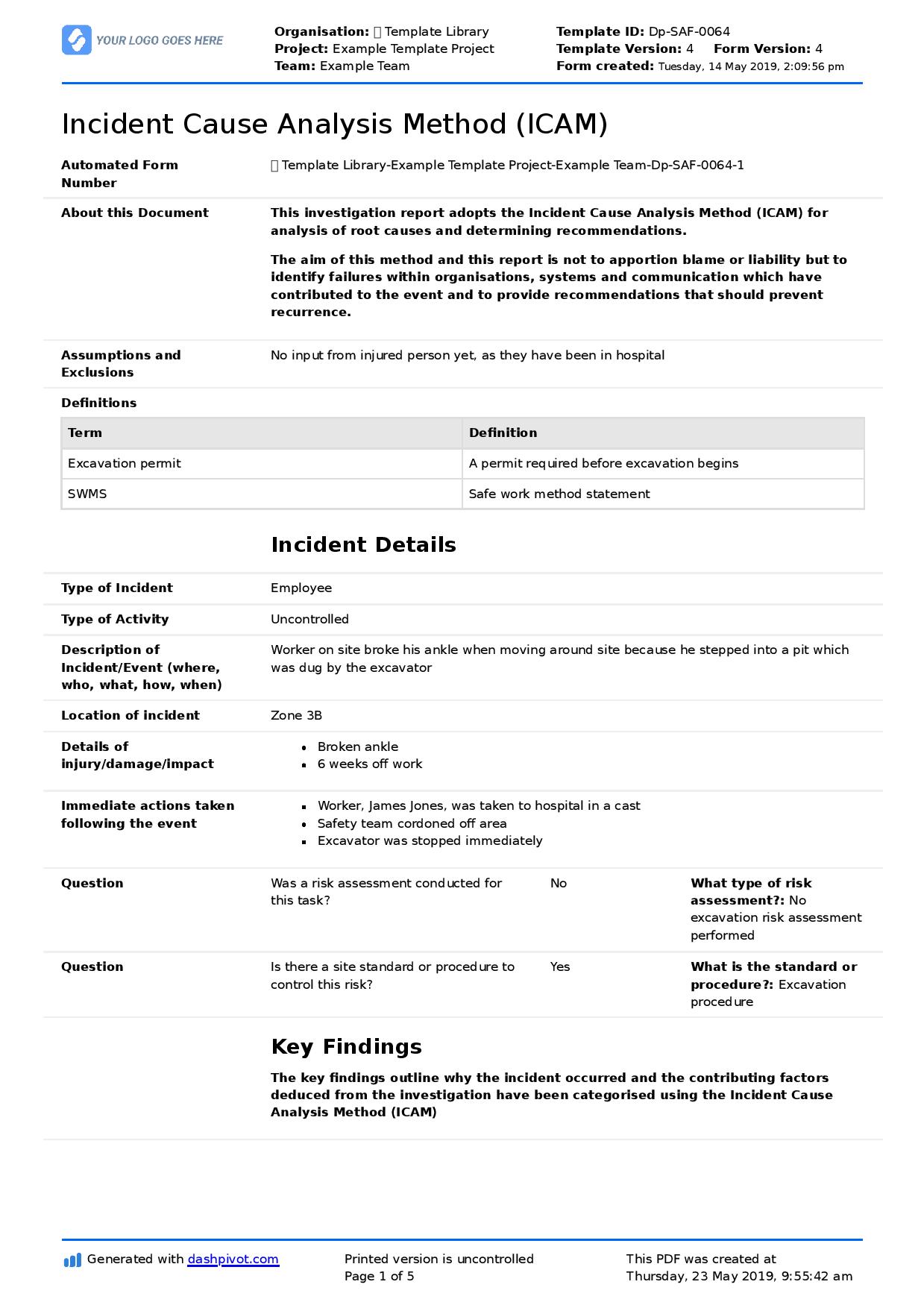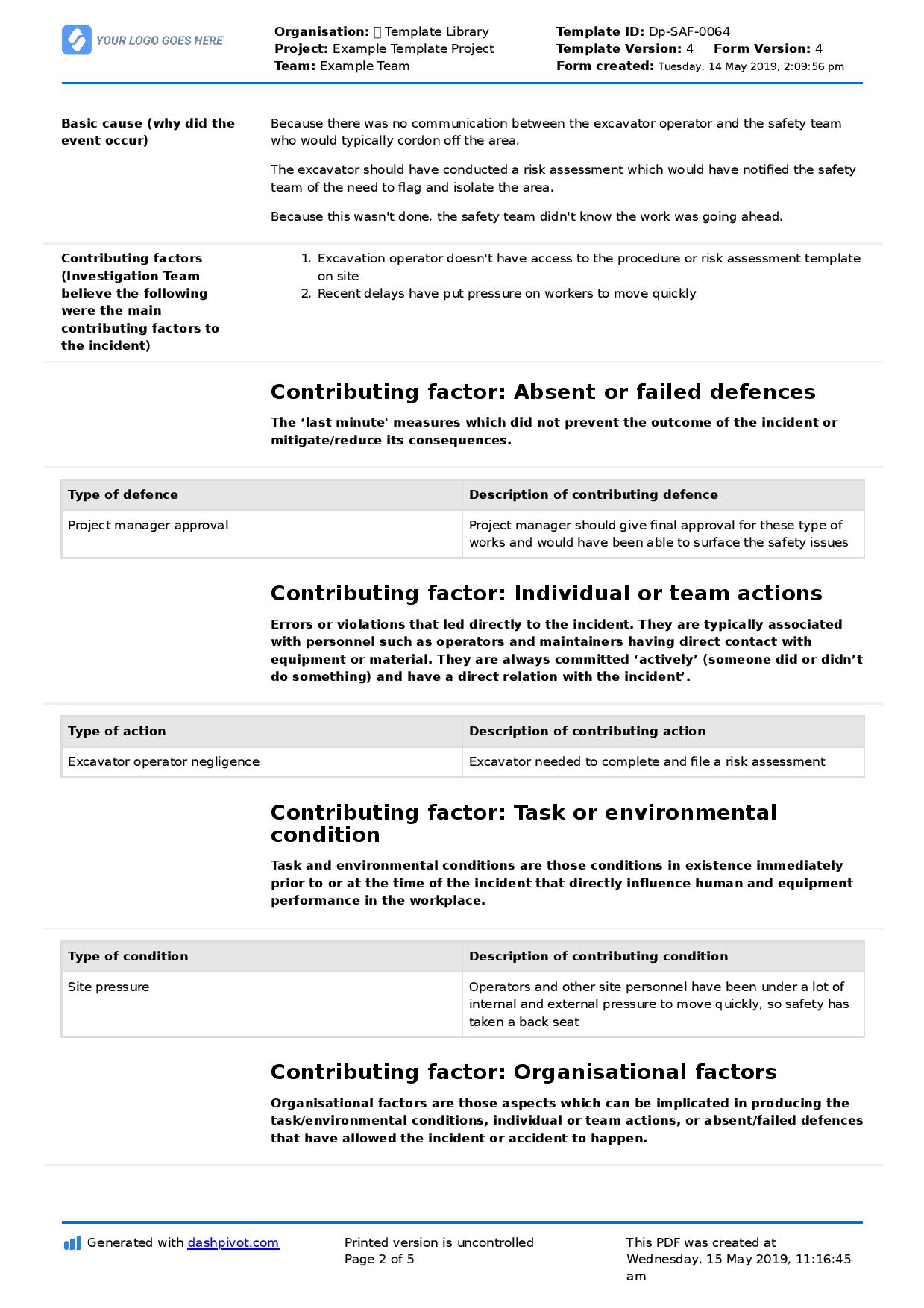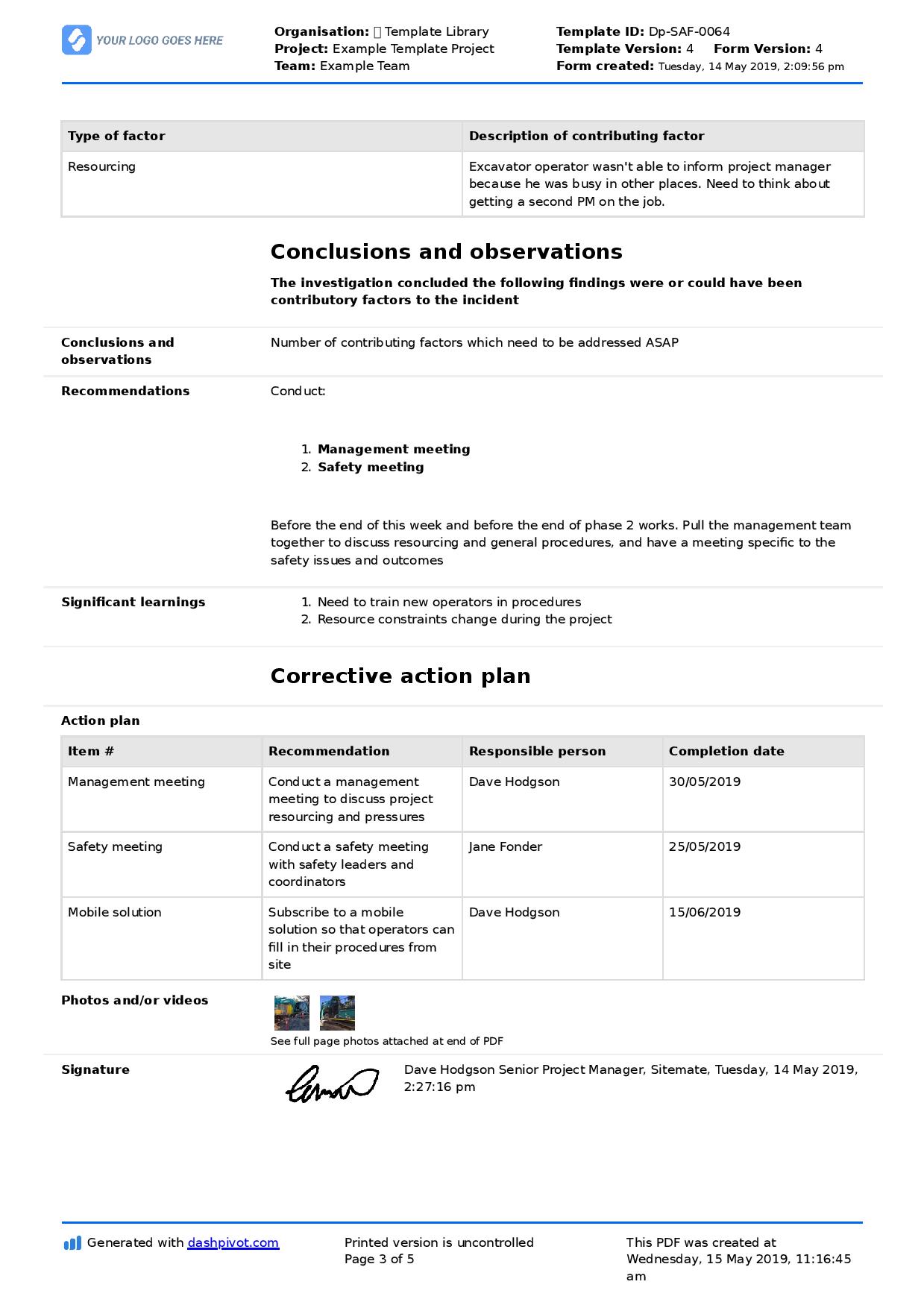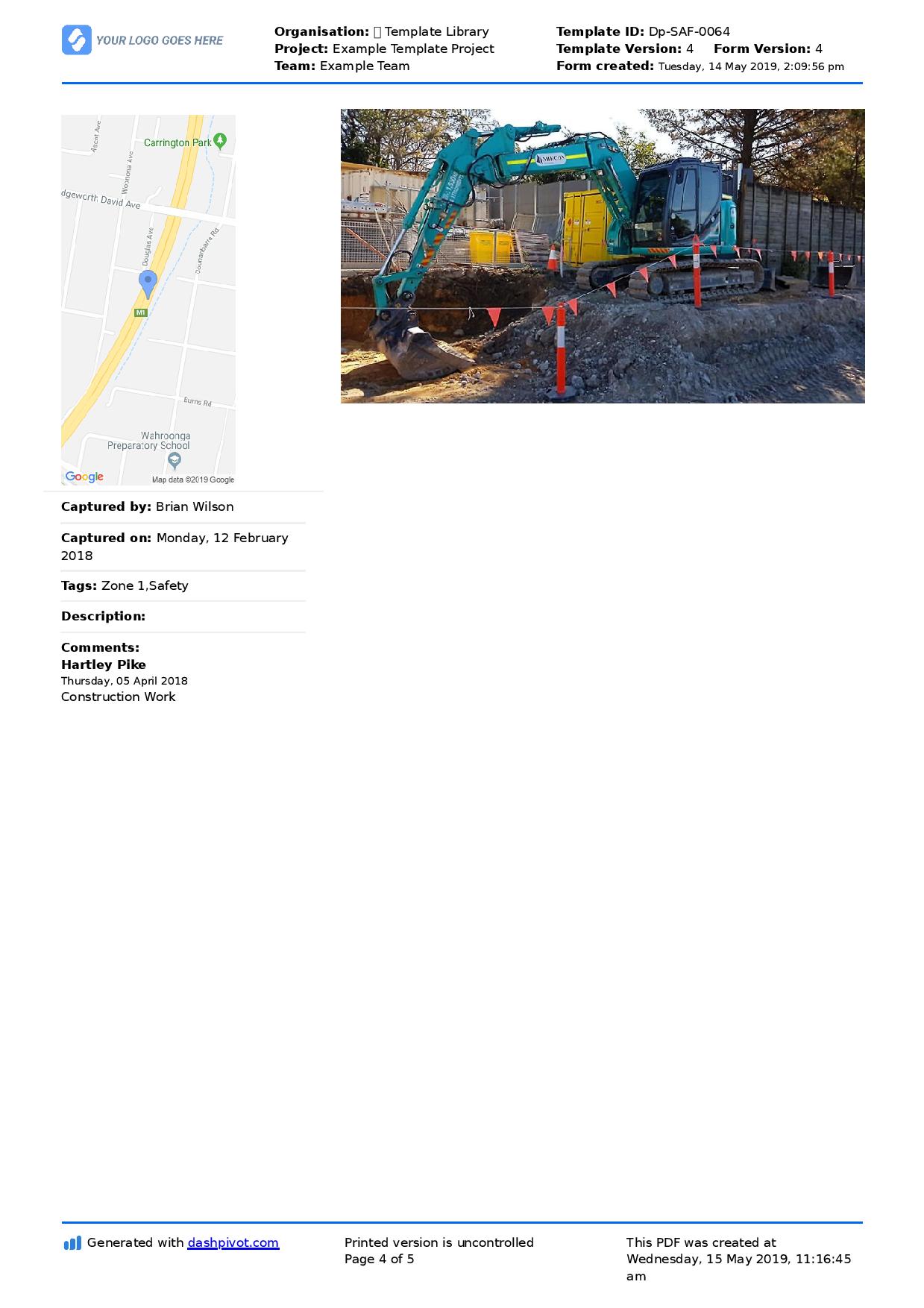Safety – ICAM Investigation
ICAM Investigation: The incident cause analysis method
In this article, we cover all of the key elements of the ICAM investigation method, as well as provide you with a number of process tips and resources you can use to improve your ICAM process and safety compliance.

What is an ICAM Investigation?
ICAM Investigations, shortened from the Incident Cause Analysis Method or Incident Cause Assessment Method is an industrial safety process followed by companies in order to uncover the root cause and contributing factors of incidents.
ICAM investigations are most common in heavy industries including:
- Aviation
- Construction
- Mining
- Manufacturing
- Infrastructure
And is relied upon and referenced in a number of countries.
The adoption of ICAM investigations has seen a move away from assessing incidents based on intentional vs. unintentional acts and which individual was at fault to a more comprehensive analysis on all of the factors which contributed to the incident.
For example, if someone fell down an excavated pit then a quick incident analysis might find that the excavator operator was at fault for not erecting a marker or barrier because that is the obvious conclusion.
But an ICAM investigation might find that the excavator operator submitted a permit to excavate, and that was meant to notify the safety manager to erect the barrier. On top of that, the safety manager might not have received the notification because his information management system was down.
Looking beyond the blame or 'personal model' is the role of the ICAM investigation, as it brings context and contributing factors into the equation - which are always existent when an incident does occur.
The ICAM investigation stems from the work of psychologist James Reason, who was an expert in the domain of human and organisation error - and the relationship between the two.
So what does an ICAM investigation actually look like?
ICAM Investigation examples
Looking at an ICAM investigation example is the best way to understand the methodology. You can find a few ICAM Investigation template variations, but all of them will share a general framework which helps an inspector, auditor or worker to conduct an ICAM investigation in a fair and comprehensive manner.
The ICAM investigation example below was conducted based on a worker falling into a site pit which was dug by an excavator.
As you can see from the example, the first few parts of the investigation report or document cover some basic housekeeping items including:
- Instructions
- Assumptions and exclusions
- Definitions
These are important parts of any investigation, as other people may be involved in the investigation and may not have the context or exact vocabulary of the people conducting the investigation.
Next, the ICAM investigation covers the details of the incident being investigated. This section will have a description of the where, who, what, how and when, as well as details about the type of activity, location of the incident and immediate actions taken following the event.
Once the incident is described properly, the analysis or assessment begins. First, there are a couple of questions about whether a risk assessment and standard operating procedure were completed and followed. This can obviously be a quick red flag.
Next, the investigator will move into declaring key findings across possible contributing factors including:
- Absent or failed defences
- Individual or team actions
- Task or environmental conditions
- Organisational factors
The ICAM investigation example below has some good definitions or 'descriptions' as to what each of these categories or contributing factors is related to.
This section is where the ICAM investigation becomes really powerful and where a good framework is essential. It's in being able to assess these possible contributing factors that a person or people are able to uncover those hidden issues which need to be rectified.
Once all of these contributing factor tables are complete, the inspector or responsible person will document their conclusions and observations and a corrective action plan.
The corrective action plan is critical. The whole point of an investigation is to uncover causes which can be fixed - so that the same incident doesn't occur again. Your corrective actions should reflect this goal, and should include action items for specific people to be completed within a specific date so that there is some accountability there and so that actions are taken.
This ICAM investigation example gives a great idea of the framework for a good investigation, and you can easily apply this framework to other ICAM investigation examples you see or have seen in the past.
The ICAM investigation example below has some good definitions or 'descriptions' as to what each of these categories or contributing factors is related to.
This section is where the ICAM investigation becomes really powerful and where a good framework is essential. It's in being able to assess these possible contributing factors that a person or people are able to uncover those hidden issues which need to be rectified.
Once all of these contributing factor tables are complete, the inspector or responsible person will document their conclusions and observations and a corrective action plan.
The corrective action plan is critical. The whole point of an investigation is to uncover causes which can be fixed - so that the same incident doesn't occur again. Your corrective actions should reflect this goal, and should include action items for specific people to be completed within a specific date so that there is some accountability there and so that actions are taken.
This ICAM investigation example gives a great idea of the framework for a good investigation, and you can easily apply this framework to other ICAM investigation examples you see or have seen in the past.

Use this ICAM Investigation report framework for free.
ICAM Investigation training
ICAM investigations have proved to be a successful procedure for many companies and projects who have uncovered underlying issues through these types of investigations.
The increased adoption of ICAM investigations as well as a steady and constant rise in safety awareness in general has also seen the creation and application of more ICAM investigation training.
ICAM investigation training typically spans across 3 main 'roles':
- Incident Investigator
- Lead Incident Investigator
- Incident Investigation Governance
The lead investigator training is the most comprehensive, covering:
-
How to conduct systemic investigations
-
Understanding human error in the context of organisational systems.
-
Data organisation methodologies (timelines and 5 whys processes)
-
Data analysis using the ICAM model
-
Development of corrective and preventative actions and long term measures
Understanding the theoretical aspect of ICAM investigations and really understanding how to ask the why's and investigate contributing factors is important - alongside having a good understanding of the incident as well as context of the activity.
ICAM investigation training is one of many safety courses and trainings which is growing in popularity as industrial companies continue to place a larger onus on workplace safety - and a deeper focus on ensuring that preventable incidents are properly investigated and properly prevented.

ICAM investigation form
Use this framework to immediately improve how you document and store ICAMs

JSA form
Prevent ICAMs from needing to take place by getting better safety analysis processes in place

Hazard report
Make it easy for your team to fill out and submit hazard reports



